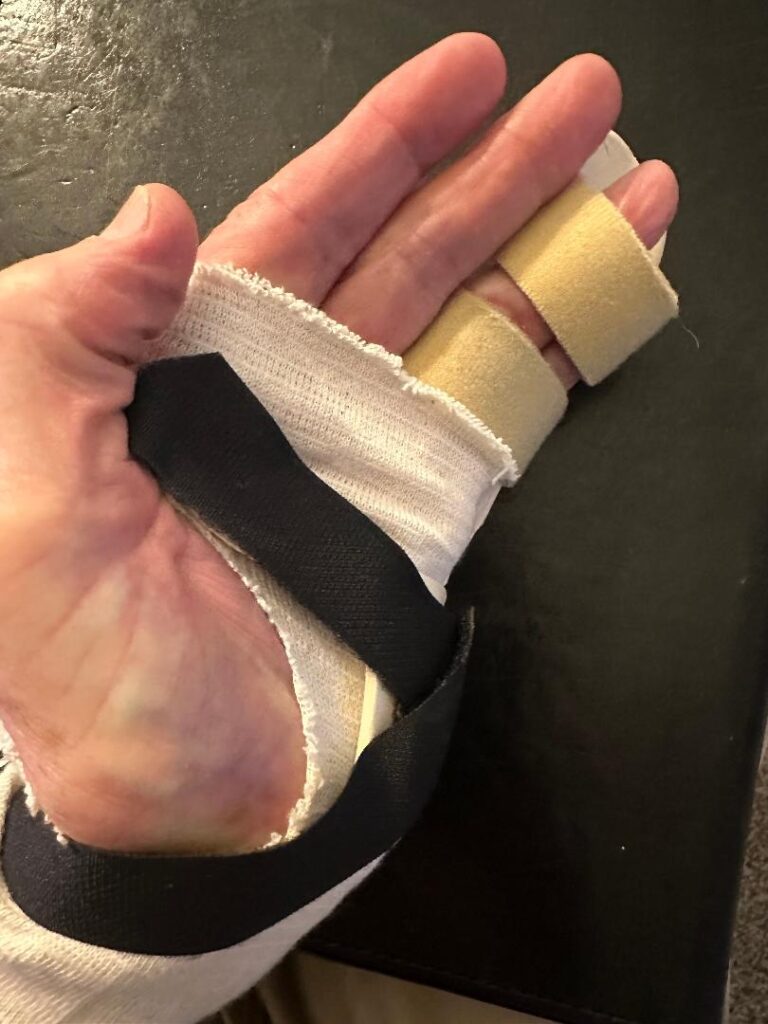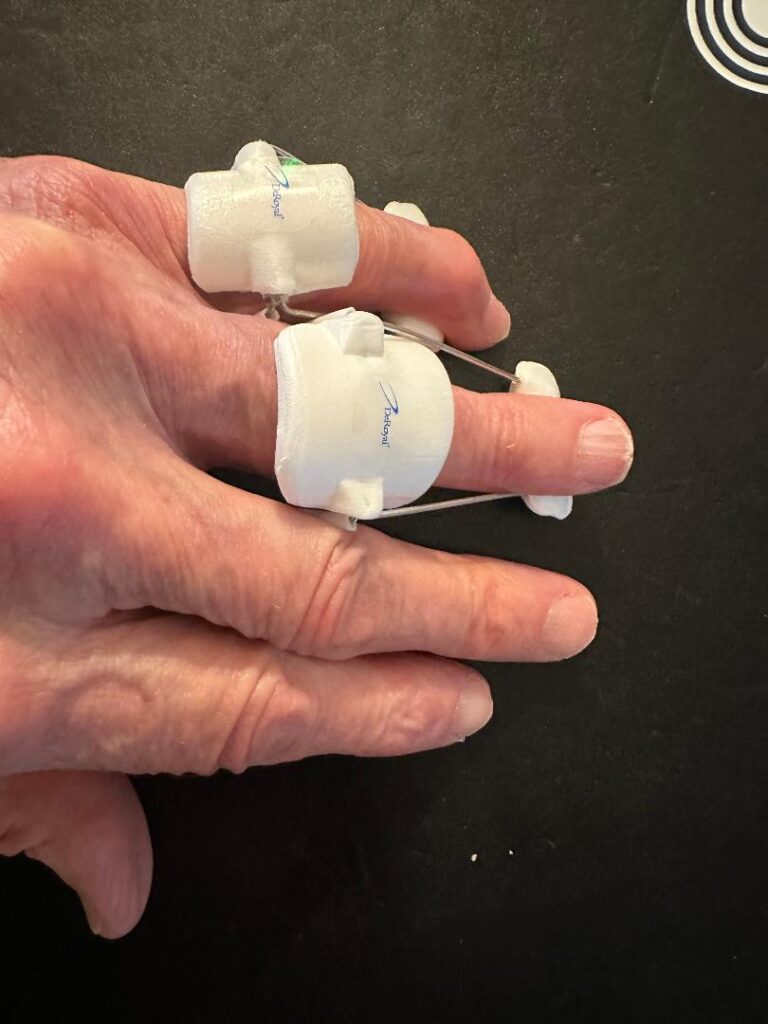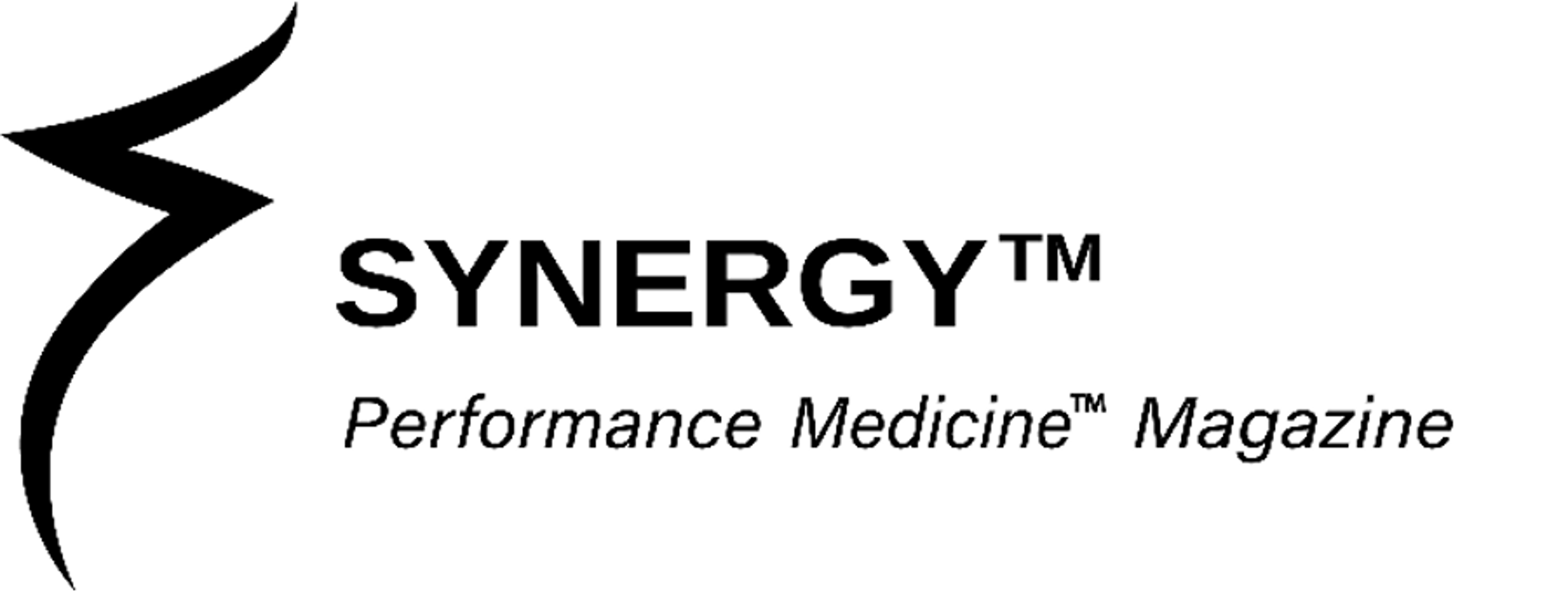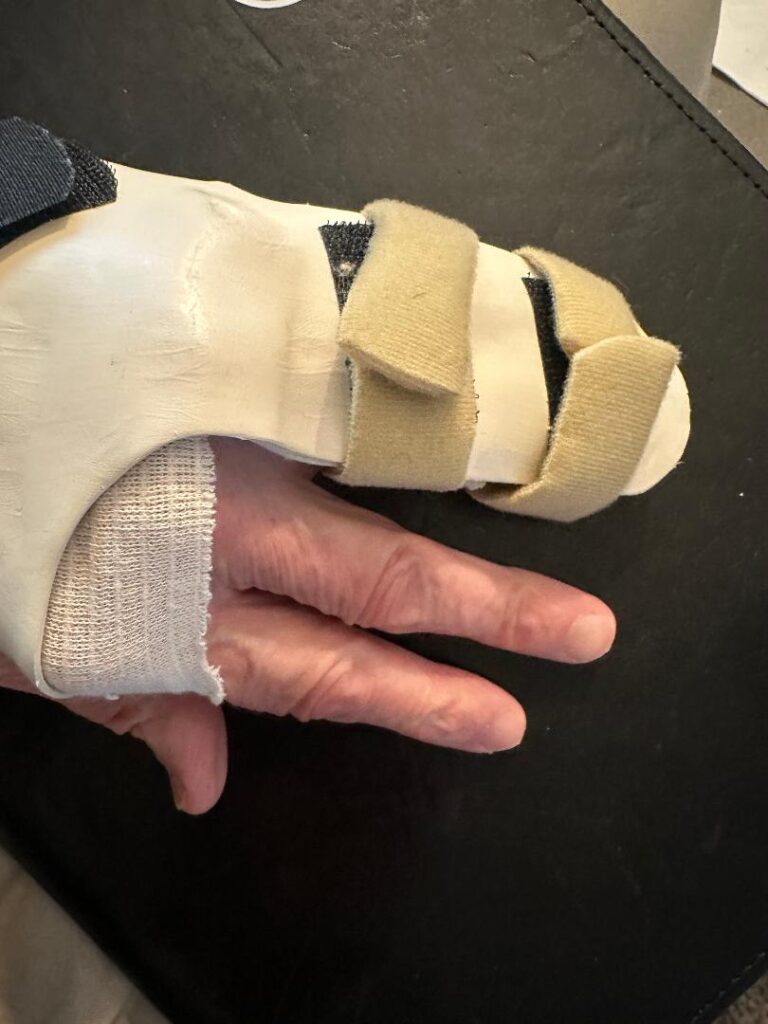Give a Hand for the New Solution to Dupuytren
Until a few years ago, surgery was the only solution for Dupuytren, removing the cords that pop up in one’s hand and eventually curling fingers back into the palm. If you don’t have this yet, you likely have seen others that suffer this crippling challenge.
Now there’s a new kid in town (Thank you, The Eagles). A Xiaflex™ injection inserting collagenase enzymes softens the cords, a nonsurgical means to weaken them so they can easily snap apart without pain.
Suffering an incision is no pleasure cruise, though it will not hurt while your arm, hand, and you are under anesthesia. The operation involves the doctor surgically removing the cords that create this problem. Previously stuck in a flexed position, the tendons have a ways to go to count as healed and straightened.
The incision healing, and the post-surgery work remain to straighten the fingers. That process can take weeks, involves pain as the hand cures itself, and requires a special brace to aid in “teaching” the finger to get back to its extended self. The therapy of bending the hand and stretching the affected fingers will cause discomfort.
For Sure. You’ll forget about it and bang your hand at least once against something (by accident) and suffer immediate and searing pain. A month or so will pass, you will have solved the issue, and fingers will be close to their original selves.
The new enzyme for an injection treatment offers a less painful process than an incision, but one will have pain to deal with, mainly the injection itself. And there will be post-manipulation therapy times to teach your fingers where they really belong.

The collagenase is injected directly into the cords. It is not that the cords have nerves, but just getting to them requires twists and turns like an off-road race with injection needles. Other than the doctor talking about the process, the injection takes under five minutes.
The hand will quickly swell to the size of a big Red Delicious Apple. Wrapping with surgical material covers the bruising that appears under the skin and the bleeding underneath the palm.
No doubt, just like the incision, a patient will bang the affected hand against something and immediately learn to provide attention to protecting that extremity.
Most Dupuytren hands require one or two injections. I used both processes—injection and incision—at one time or another.
The most recent, a deuce, where the cord leading to the left-hand little finger shared its growth with the neighboring ring finger. Two fingers affected, two separate shots; how kind.
My Hand Doctor at TRIA in Bloomington, MN, offered me a choice of either procedure. Sometimes, the patient may choose either option, like mine, because of the cord(s). Other times, the doctor will determine what a patient needs. In my case, the choice was easy: injection.
The recovery of the hand seems to me much quicker, and the resulting pain, in my view, is significantly less.
I sat through presentations in the financial world about the most expensive liquid, which is not petroleum but ink for computer printers. Scoot over, pal; Xiaflex™ wins hands down (no pun intended).

I do not have exact numbers for today, but in 2010, initial doses quoted by Dupuytren Research Group cost $3250. In 2024, after its approval by the FDA in 2020, the dose is rumored to be in the $20,000 range.
Will either of these procedures permanently eliminate Dupuytren? The answers I found said maybe, perhaps, and not sure. Why? Because there is no way to know, at least at this stage. Initial results reflect the incision option offers five or six percentage numbers over the injection.
Will you enjoy having your fingers do what they need to do in your world? It’s like this: I knew I had a problem when my left-hand little finger continually hit the Q key versus its vowel, A, the one it is supposed to type. The answer now is yes, with the letter A coming from the finger’s command. The way it is supposed to be.
Felix Plater first described the contracture in 1610. Guillaume Dupuytren, a famous surgeon born in 1777, got his name attached to this disease because he became known for his work on it, not that he discovered it.
Celebrate Dupuytren Day annually on October 5, his birthday. (Dupuytren Research Group, October, 2023)



